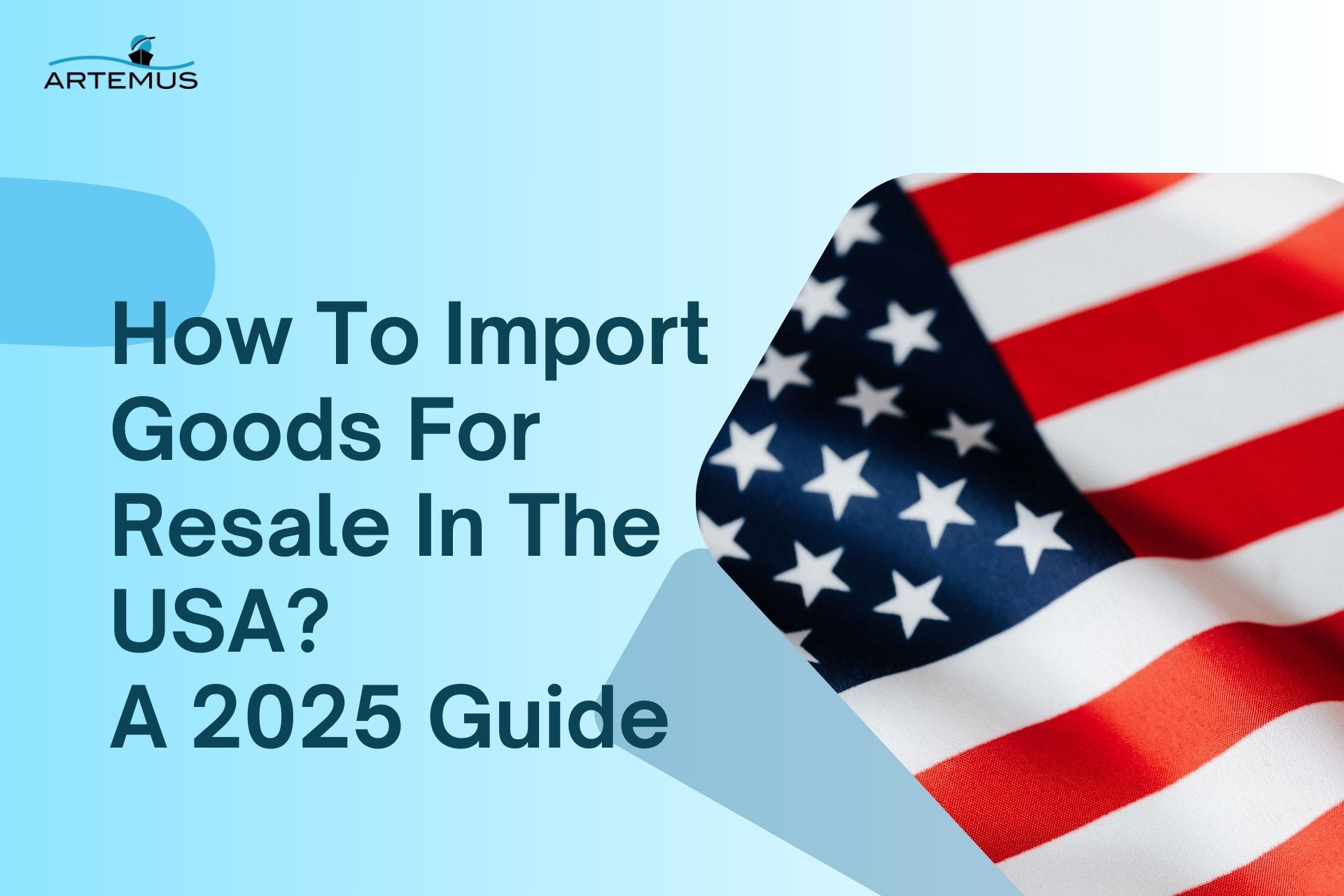
What Is Inbound Logistics & Outbound Logistics? A 2025 Guide
In the dynamic world of supply chain management, understanding the nuances of inbound and outbound logistics is crucial for operational

In the realm of international trade, differentiating between the HS Code and the HTS Code is vital. While the Harmonized System (HS) Code provides a global standard, the Harmonized Tariff Schedule (HTS) Code tailors this for the U.S. This blog explores into HS Code VS HTS Code, examining their similarities, differences, and the crucial role they play in international trade.
It’s worth noting that staying compliant with these codes is not just a matter of regulatory adherence but a strategic imperative for businesses engaged in cross-border transactions. Additionally, in the realm of efficient trade practices, Artemus Transportation Solutions stands out by offering an innovative Importer Security Filing (ISF) software solution.
Table Of Contents
The Harmonized System (HS) Code is an internationally recognized classification system used to facilitate the systematic categorization and identification of traded products. It assigns a unique code to each product, creating a standardized method for customs authorities worldwide to understand and regulate the flow of goods across borders.
The HS Code comprises a numerical code structure, organized hierarchically, with each digit representing a different level of classification, from the broader category to the specific product.
This system streamlines global trade processes, providing a common language for businesses, customs officials, and regulatory agencies to accurately and uniformly classify products, enabling smoother international trade transactions and ensuring compliance with customs regulations.
Related: ACI Emanifest For Canada: A Guide For Successful Importing
The HTS Code is organized in a hierarchical structure with specific levels of detail. Each code is composed of a series of digits, starting from the general and becoming more detailed as the digits progress. The code is divided into chapters, each covering a broad category of products. Subsequent levels include headings and subheadings, offering increased specificity about the nature and characteristics of the goods.
The Harmonized Tariff Schedule (HTS) Code is a crucial aspect of international trade, providing a systematic classification for goods under the United States regulatory framework. Here’s a breakdown in points:
1. Classification System: HTS employs a numerical code to systematically classify and identify imported and exported goods within the United States.
2. Numerical Precision: Each product is assigned a unique code, ensuring precision in defining items for customs and regulatory purposes specific to the U.S. trade environment.
3. Global Consistency: Aligned with the International Harmonized System (HS) Code, HTS ensures uniformity in product classification on a global scale while tailoring it to U.S. trade regulations.
4. Trade Regulation: HTS determines applicable tariffs, quotas, and regulatory requirements within the United States, contributing to fair and transparent international trade practices as regulated by U.S. authorities.
5. USITC Oversight: Maintained by the U.S. International Trade Commission (USITC), the HTS is regularly updated to reflect changes in trade dynamics and product classifications, keeping the U.S. trade system current and in compliance with evolving global standards.
Related: How To Find A Customs Broker? 7 Important Factors To Know
Schedule B Codes, also known as the Schedule B Export Codes, are a specific classification system used in the United States for reporting exports. Managed by the U.S. Census Bureau, these codes provide a detailed and standardized method for categorizing exported goods, similar to the Harmonized System (HS) and Harmonized Tariff Schedule (HTS) used for imports.
Each Schedule B Code is a 10-digit number that uniquely identifies and describes a particular export product. These codes are crucial for accurate and consistent international trade data reporting, aiding government agencies, businesses, and researchers in analyzing trade trends, enforcing export regulations, and facilitating the overall flow of goods across borders.
Understanding and correctly applying Schedule B Codes is essential for exporters to comply with reporting requirements and ensure the efficient and transparent functioning of the U.S. export system.
Related: What Does A Customs Broker Do? 10 Key Responsibilities
Delve into the intricacies of international trade with a quick guide on HS Code vs HTS Code. Uncover the core differences that shape the classification of goods across borders.
HS Code: The Harmonized System (HS) Code is a standardized classification system adopted by the majority of countries worldwide. It provides a common language for the classification of products, facilitating smoother international trade by ensuring a consistent approach to customs procedures globally.
HTS Code: The Harmonized Tariff Schedule (HTS) Code is specific to the United States and builds upon the global HS Code. While the first six digits align with the HS Code for international consistency, the additional four digits are tailored to meet the unique needs of U.S. trade regulations.
HS Code: Administered by the World Customs Organization (WCO), an international body that oversees and updates the HS system to ensure uniformity in product classification across borders.
HTS Code: Managed by the U.S. International Trade Commission (USITC), responsible for adapting the global HS Code to the specific requirements of the United States, incorporating additional details and modifications.
HS Code: The HS Code employs a six-digit numerical system for global classification, providing a broad categorization of products. Countries can add more digits to enhance specificity based on their individual needs.
HTS Code: Extending beyond the global HS Code, the HTS Code comprises 10 digits in the United States, offering a more detailed classification of goods for accurate reporting and regulatory compliance.
HS Code: Used universally for both imports and exports, the HS Code streamlines international trade reporting, ensuring a standardized approach to classification and facilitating effective communication between customs authorities globally.
HTS Code: Primarily utilized for imports into the United States, the HTS Code assists in determining applicable tariffs, quotas, and regulatory requirements specific to the U.S. trade environment.
HS Code: Serves as the basis for determining tariffs on a global scale, including within the United States. It ensures consistency in tariff application across borders.
HTS Code: Specifically employed for tariff determination within the United States, aligning with U.S. trade regulations and contributing to the fair and consistent application of tariffs.
HS Code: Allows individual countries to modify the code by adding digits to address specific local requirements and nuances in the classification of products.
HTS Code: Incorporates modifications to the global HS Code to meet U.S. trade regulations, reflecting the specific needs and nuances of the American trade environment.
HS Code: Facilitates global trade by providing a universal classification system. Its primary purpose is to create a common language for customs officials, businesses, and regulatory bodies involved in international trade.
HTS Code: Tailors the global system to meet U.S. trade requirements, ensuring that the classification aligns with the specific needs of the United States for regulatory compliance and effective trade management.
HS Code: Ensures compliance with international trade agreements and standards, promoting fair and consistent trade practices globally.
HTS Code: Ensures compliance with U.S. trade agreements and regulations, addressing the specific requirements and commitments made by the United States in its trade agreements with other nations.
HS Code: Provides a broad classification with six digits, offering a general overview of the type of product being traded.
HTS Code: Offers a more detailed classification with 10 digits, allowing for a finer level of granularity and specificity in describing the characteristics of the product.
HS Code: Crucial for businesses engaged in international trade, as it provides a standardized and universally recognized system for classifying products. This ensures that businesses can accurately communicate the nature of their goods across borders, facilitating smoother customs procedures and trade transactions.
HTS Code: Essential for U.S. businesses involved in importing goods, as it dictates the tariffs, quotas, and regulatory requirements applicable to their products. Adherence to the correct HTS Code is critical for regulatory compliance and accurate financial planning related to import duties. Businesses need to navigate the nuances of the HTS Code to ensure seamless customs clearance and adherence to U.S. trade regulations.
Related: Customs Broker VS Freight Forwarder: 5 Key Differences
Artemus emerges as the preeminent ISF (Importer Security Filing) software solution for compliance, offering a comprehensive and user-friendly platform that streamlines the complex process of filing essential information with U.S. Customs and Border Protection.
Known for its robust features, Artemus excels in ensuring timely and accurate submissions, a crucial aspect of meeting the stringent ISF requirements. The software simplifies data entry, validates information for accuracy, and facilitates seamless communication with customs authorities. With its advanced capabilities, Artemus not only enhances compliance but also helps businesses avoid penalties by flagging potential errors and providing real-time updates.
Its user-centric interface and automation features make it a top choice for importers seeking a reliable and efficient ISF solution to navigate the intricacies of international trade regulations effectively.
Related: What Is HTS Code (Harmonized Tariff Schedule)? A Quick Guide
Another name for the HS code is the Harmonized System code.
The HS code is a globally recognized classification system for traded products, while the HTS code is a U.S.-specific extension aligning with the HS system tailored to meet American trade regulations.
The HTS code is primarily used for import purposes in the United States, providing a classification system for goods entering the country.

In summary, distinguishing between the HS Code and HTS Code is vital for businesses in international trade. The HS Code sets a global standard, while the U.S.-specific HTS Code refines this classification for American trade regulations. Accurate navigation of these codes is crucial for ensuring compliance, facilitating smooth customs procedures, and effectively participating in international trade within specific national regulatory frameworks.
Related: ISF Fees (Import Security Filing): When & How To Pay?

In the dynamic world of supply chain management, understanding the nuances of inbound and outbound logistics is crucial for operational

In today’s interconnected world, businesses rely heavily on global trade to expand their markets, access new resources, and drive growth.

Importing goods for resale in the USA presents a lucrative business opportunity, but navigating the complexities of U.S. customs regulations,
Get In Touch
Artemus’ Software Solutions for ISF, AMS, Japan AFR, eManifest Canada, & Panama B2B filings.